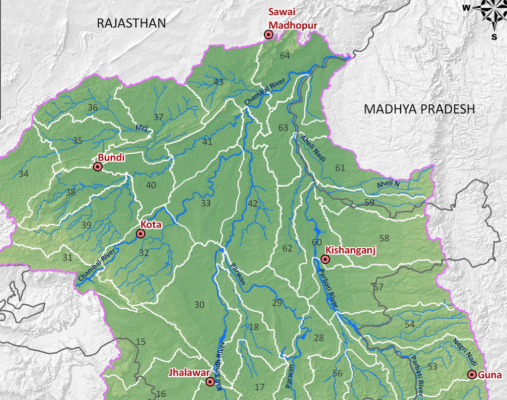Eastern Rajasthan Canal Project: The Chief Minister of Rajasthan has demanded the national project status for the Eastern Rajasthan Canal Project (ERCP).
The main advantage of a project which has received national project status is that 90% of the funding for the project will be given by the central government. The estimated cost of the ERCP is around Rs. 40,000 crore.
Background:
- According to the state Water Resources Department, Rajasthan, the largest state of India with a geographical area of 342.52 lakh hectares which amount to 10.4% of the entire country, holds only 1.16% of India’s surface water and 1.72% of groundwater.
- Among the state’s water bodies, only the Chambal river basin has surplus water but this water cannot be tapped directly because the area around the Kota barrage is designated as a crocodile sanctuary.
- Through the help of diversion structures, interbasin water transfers, linking channels and construction of pumping main feeder channels, the ERCP aims to create a network of water channels which will cover 23.67 % area of Rajasthan along with 41.13 % population of the state.
About the Eastern Rajasthan Canal Project:
- It aims to harvest surplus water available during rainy season in rivers in Southern Rajasthan such as Chambal and its tributaries, including Kunnu, Parvati, Kalisindh, and use this water in south-eastern districts of the state, where there is scarcity of water for drinking and irrigation.
- ERCP is planned to meet drinking and industrial water needs of the southern and south eastern Rajasthan, for humans and Livestock till the year 2051.
- It proposes to provide drinking water to 13 districts of Rajasthan and provide irrigation water for 2.8 lakh hectares of land through 26 different large and medium projects.
- 13 districts: Jhalawar, Baran, Kota, Bundi, Sawai Madhopur, Ajmer, Tonk, Jaipur, Karauli, Alwar, Bharatpur, Dausa and Dholpur.
Benefits:
- A significant area of land will get irrigation facilities.
- It intends to improve the ground water table in the rural areas of the state.
- Positively influencing the socio-economic conditions of the people.
- It adds special emphasis on the Delhi Mumbai Industrial Corridor (DMIC) and envisages that sustainable water sources will enhance and help industries grow in these areas.
- Resulting in investment and revenue
